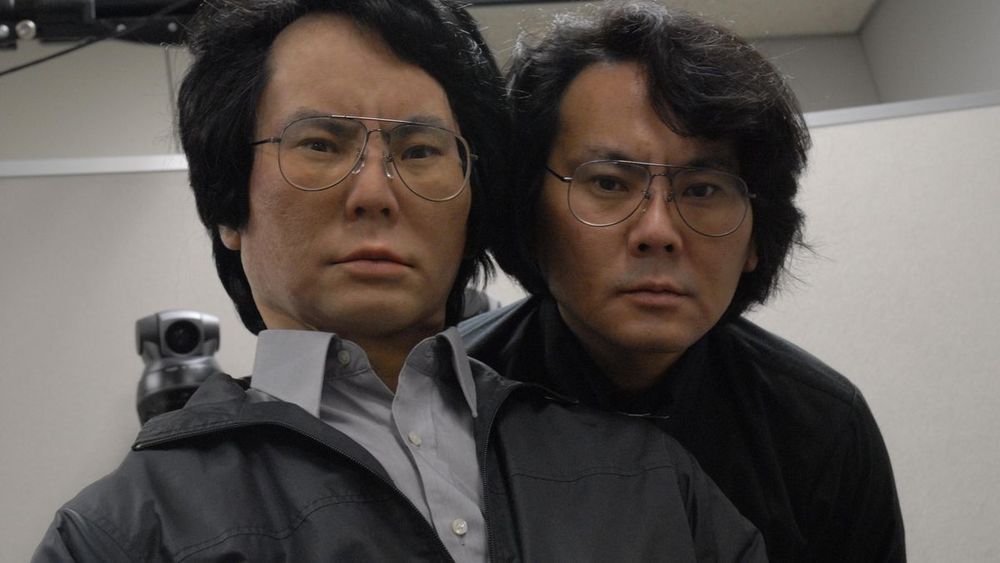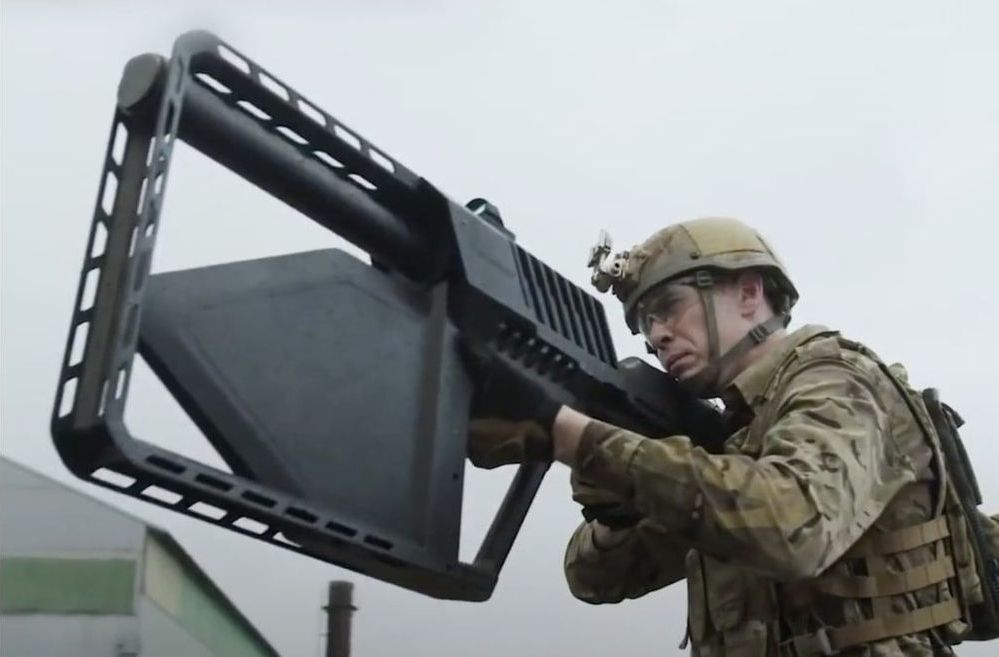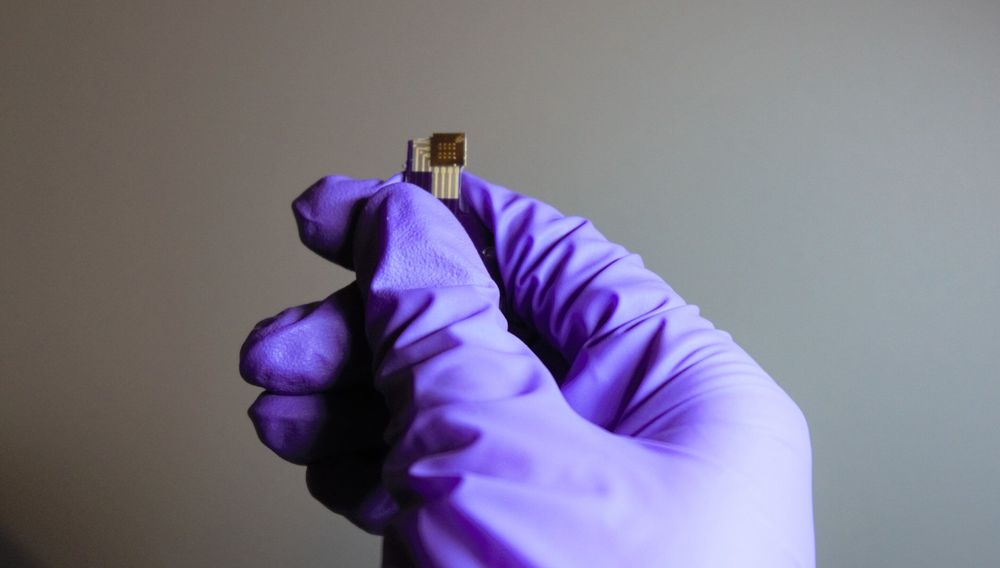We’re getting closer to technologies that let us exist forever in some way — using data to power our existence in VR, robots, chatbots and holograms. Should we do it?



The DroneGun Tactical by Australian-based company DroneShield is like something out of a video game. The rifle-shaped, high-powered antenna “blasts” drones out of the sky with frequency waves.
DroneShield designed the technology to thwart unmanned aerial vehicles (UAV) with explosives or weapons strapped to them. It works by blocking video transmission and GPS information, making it nearly impossible for its pilot to regain control.
“Most modern drones are equipped with a protocol that they come back to their operator when the radio frequency signal is jammed and land when radio frequency and GPS are both jammed,” company spokesman Oleg Vornik told the Daily Mail.

To just solve a puzzle or play a game, artificial intelligence can require software running on thousands of computers. That could be the energy that three nuclear plants produce in one hour.
A team of engineers has created hardware that can learn skills using a type of AI that currently runs on software platforms. Sharing intelligence features between hardware and software would offset the energy needed for using AI in more advanced applications such as self-driving cars or discovering drugs.
“Software is taking on most of the challenges in AI. If you could incorporate intelligence into the circuit components in addition to what is happening in software, you could do things that simply cannot be done today,” said Shriram Ramanathan, a professor of materials engineering at Purdue University.
Does artificial intelligence jeopardize employment for humans? What will people do when smart robots join the workforce? AI already plays a role in many of our jobs, and if you have ever searched for information online, you have interacted with an AI. If we extrapolate the evolution of search, we can imagine that soon AIs will become even better at helping us learn solutions that have worked in the past and remember what things have failed. In this way, working with AIs can be like having a really smart colleague or expert old-timer on our team. And these AI coworkers can also help us experiment with new approaches because AIs can be creative as well. Their creativity is unlike human creativity, and that uniqueness is its primary value. AIs can also make valuable team members by performing rote tasks that humans are or become bored by. The share of work that AIs perform is likely to shift over time, but I cannot think of a single job or occupation that will not benefit from collaborating with and delegating to AIs. If we reframe our fears about robots taking human jobs, if we can utilize the AI over our shoulder, if we can see AIs as team members, we will find the future of work holds opportunities for all of us.
This video on “The Future of Employment with AI” was commissioned by China Mobile as part of an online course. It is one of 36 lecture videos. A version with Chinese subtitles is available at Citic Migu: http://citic.cmread.com/zxHtml/listenBook/listenDetail/liste…&channel=1
A transcript of the lecture in English is available here: https://drive.google.com/file/d/16dYZ4Vwm796ScRQ0lHrEauwC4M3…sp=sharing


Most of us are familiar with the four classical states of matter – solid, liquid, gas and plasma – but there’s a whole world of exotic states out there. Now, physicists at Radboud and Uppsala Universities have identified a new one named “self-induced spin glass,” which could be used to build new artificial intelligence platforms.
Magnetism usually arises when the electrons in the atoms of a material all spin in the same direction. But in a spin glass, the atomic magnets have no order, all spinning in random directions. The “glass” part of the name comes from the similarities to how atoms are arranged amorphously in a piece of regular old glass.
So far spin glasses have only been found in certain alloys, but now, researchers have discovered that the state occurs naturally in the pure element neodymium. To differentiate it from the alloy version, they’ve called the new state self-induced spin glass.

The strongest permanent magnets today contain a mix of the elements neodymium and iron. However, neodymium on its own does not behave like any known magnet, confounding researchers for more than half a century. Physicists at Radboud University and Uppsala University have shown that neodymium behaves like a so-called ‘self-induced spin glass,’ meaning that it is composed of a rippled sea of many tiny whirling magnets circulating at different speeds and constantly evolving over time. Understanding this new type of magnetic behavior refines our understanding of elements on the periodic table and eventually could pave the way for new materials for artificial intelligence. The results will be published in Science on May 29, 2020.
“In a jar of honey, you may think that the once clear areas that turned milky yellow have gone bad. But rather, the jar of honey starts to crystallize. That’s how you could perceive the ‘aging’ process in neodymium.” Alexander Khajetoorians, professor in Scanning probe microscopy, together with professor Mikhail Katsnelson and assistant professor Daniel Wegner, found that the material neodymium behaves in a complex magnetic way that no one ever saw before in an element on the periodic table.


When you think of the words “data” and “mine”, no doubt the idea of data mining comes first. However, just as much as we find value in mining the rich resources of data, so too can we apply the advanced techniques for dealing with data to real-world mining — that is, extracting natural resources from the earth. The world is just as dependent on natural resources as it is data resources, so it makes sense to see how the evolving areas of artificial intelligence and machine learning have an impact on the world of mining and natural resource extraction.
Mining has always been a dangerous profession, since extracting minerals, natural gas, petroleum, and other resources requires working in conditions that can be dangerous for human life. Increasingly, we are needing to go to harsher climates such as deep under the ocean or deep inside the earth to extract the resources we still need. It should come as little surprise then that mining and resource extraction companies are looking to robotics, autonomous systems, and AI applications of all sorts to minimize risk, maximize return, and also lessen the environmental impact that mining has on our ecosystem.
On a recent AI Today podcast episode, Antoine Desmet of mining technology and equipment company Komatsu shared how they’re using advanced forms of AI, automation, and robotics to make an impact on the organization’s operations. Antoine has an interesting background, starting his career as a telecom engineer and receiving a Ph.D in neural network engineering. After getting his Ph.D, he returned to Komatsu and started working in surface analytics. He states that at the time there was a lot of data to work with, but very few analytics in place. He decided to start implementing machine learning and in the last few years his company has seen significant growth through this approach, with his data science team growing from just one person to ten people.
